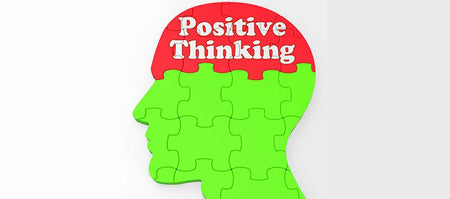- Rather than starting by asking what I am ready to teach, we can ask what our learners are ready to learn.
- Rather than focusing on whether students are complying with our directions, we can ask whether we are building their commitment and capacity to learn.
- Rather than expecting all students to progress at the same learning rate, we can design approaches that respond to student readiness to learn and their optimal pace for doing so.
- Rather than expecting students to depend on predetermined paths for learning, we can nurture in students the skills and inclination to become increasingly independent learners.
Latest Posts

In Your Corner, Student Learning
Enlist the Most Powerful Influence on Learning
Who has the greatest influence on whether students will learn? Some say it is the teacher. This statement recognizes the powerful impact educators can have on the conditions, direction, and focus of learning. Teachers bring knowledge, experience, and strategies crucial to learning. Teachers create the environment, design activities, monitor progress, provide feedback, and offer many other supports for learning.
However, close examination reveals that it is not accurate to say that teachers have the greatest influence on learning in the classroom. It is learners who hold the most powerful influence. They choose whether learning will occur. A simple test of this premise can be made by considering who must be present for learning to happen. If learners are not present in the classroom, learning cannot occur. If the teacher is not present, learners may still choose to learn. Although, the learning may be less intentional, less focused, and even lead in undesirable directions.
To be clear, this is not an argument intended to discount the influence and status of teachers in this crucial process. Rather, it recognizes that learning is an autonomous act. It is intentional and self-constructed. It is a personal process. As educators, we can have significant influence on students’ choices to learn and provide crucial guidance and support to the process, but learning is the work of students. We might say that while learners are the most important resource for learning, teachers can be the most powerful stimulators of learning.
We know that learning begins with what students know and are ready to learn. Learning grows when students make connections and integrate new understanding with past knowledge and experience. Learning tends to stick best when it is driven by purpose and students understand the usefulness of what they are learning.
Unfortunately, the traditional approach to formal learning has been to develop curriculum, plan lessons, and present instruction based on what we believe students should know and be ready to learn, rather than what students are ready to learn. The system often features pacing guides based on the assumption that learners will learn at a predetermined rate. Meanwhile, instruction is often delivered to groups of students with varied states of readiness. Some may already know what is being presented. Others may not have the background knowledge and skills to benefit fully. Still others may be ready to engage and learn from the experience. This is a serious system design problem with which educators constantly struggle as they attempt to engage and support the learning of individual students.
So, how can we activate this too often underutilized classroom resource? How can we significantly increase the level of learning and ensure that a much larger portion of students learn at high levels? We can start by rethinking the traditional approach that is driven almost exclusively by instruction and prioritize learning as the core and driving activity. This shift invites us to ask a new set of questions and consider learning conditions that will activate students as key influencers of their learning:

In Your Corner, Student Learning
Flexible Classroom Space and Learning: What Is the Connection?
Redesigning classroom space, purchasing comfortable furniture, and giving students more freedom to choose where they will learn are popular trends. Educators hope to create more inviting learning environments and reduce student anxiety and stress while learning. The objectives are laudable, but these types of changes in classroom setup by themselves will likely fall short of generating better learning outcomes. In some cases, they have also been shown to make learning more difficult for students who need more structure and routine to support their learning.
In fact, there is little evidence that changing seating arrangements and replacing furniture will change learning outcomes in any significant and sustainable way. This is not to say that structure and space are not important. They can be, but only if they are aligned to and support experiences and processes that have greater power to influence learning outcomes.
The truth is that we cannot change learning outcomes unless we change learning experiences. Learning experiences include how students engage with content, are introduced to new skills, and the role students play in the learning process. When students experience learning that is focused on their needs, are supported to build learning independence and agency, and feel a sense of belonging to and shared responsibility in a learning community, a flexible learning environment can supplement their learning experience. On the other hand, if students continue to experience a traditional, standardized, instruction-driven learning environment, flexibility in structure and space will likely have little positive impact. In fact, students who feel little ownership for their learning environment are more likely to misuse and abuse the freedom and responsibility they are offered.
So, how should we think about the role of structure and space if our goal is to maximize learning outcomes? First, we need to be clear about the learning experiences we want our students to have. Do we want them to experience greater ownership and take more responsibility for their learning? Do we want students to develop greater independence? If so, we need to design learning experiences that lead to these outcomes. Giving students choice and voice, having students set goals for their learning, supporting students to participate in learning assessment activities, and building community are great places to start.
Second, we need to determine the optimal context for instructional strategies and learning experiences to flourish. Sitting in desks that are arranged in straight rows facing the teacher can work against efforts to collaborate, develop community, and take ownership for learning. Conversely, if learning is expected to be driven primarily by structured presentations and teacher led activities, desks in rows facing the front might be an appropriate arrangement.
Third, we need to consider how the space will be used. Will students have a variety of choices in where to sit and how to learn? If so, the space and furniture should reflect the learning design, with multiple seating options, varying table heights, etc. Of course, the process of developing responsibility and independence in learning may require instruction, coaching, feedback, and guidance so that students take appropriate advantage of the spaces designed to support their learning experiences.
The bottom line is that designing space and deciding what furniture to purchase is not the best place to begin. A better starting point is to ask what learning experiences we want students to have and what learning outcomes we want to pursue. Further, we need to be clear about how the approach we choose will lead to the learning outcomes we seek. Once these decisions are made, we can ask what furniture and how more flexible space will support the learning environment we want to create.
A final thought: The purchase of a full complement of classroom furniture to create flexible space may not always be necessary. Often, pieces of existing furniture can be repurposed. Three-shelf bookcases can double as high-top workspaces. No longer used choir risers can serve as small group seminar spaces. Even a corner of the room, when separated by a visual barrier, can become a “reading cave,” or “reflection zone.” Use your imagination and scour the school storeroom. You may be surprised by what you discover.
Share Your Tips & Stories
Share your story and the tips you have for getting through this challenging time. It can remind a fellow school leader of something they forgot, or your example can make a difficult task much easier and allow them to get more done in less time. We may publish your comments.
Send Us An Email













